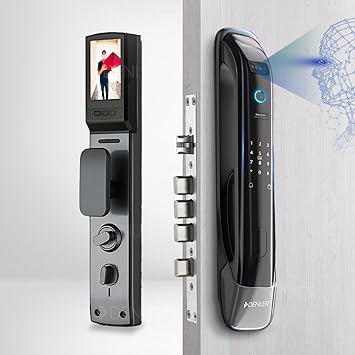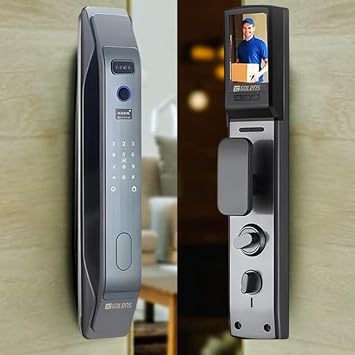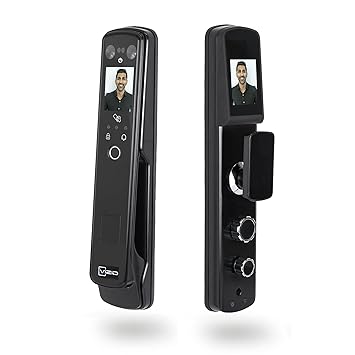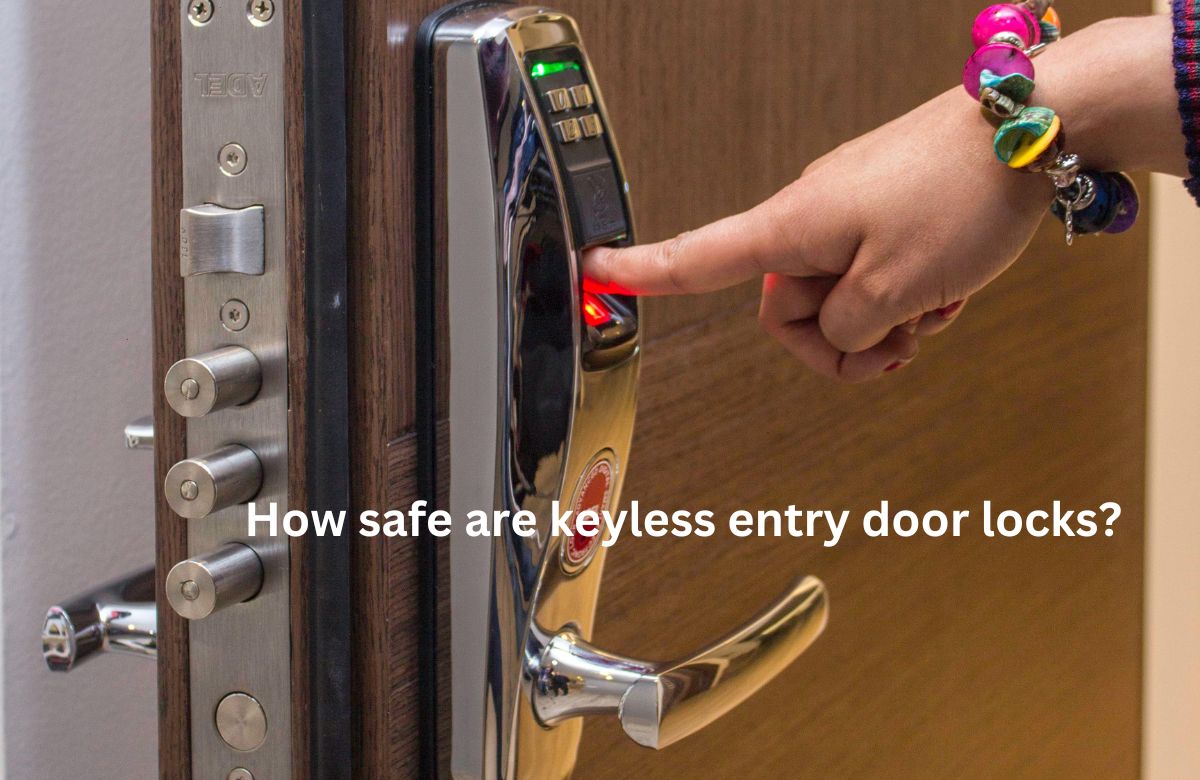How Safe Are Keyless Entry Door Locks?
Keyless entry door locks have become increasingly popular in recent years, offering convenience and modern technology to homeowners. However, as with any technological advancement, security concerns arise. This article will delve into the safety of keyless entry door locks, exploring their vulnerabilities, strengths, and best practices for ensuring your home’s security.
By understanding the potential risks and taking appropriate measures, you can make informed decisions about the security of your home.
How Does a Keyless Entry Door Lock Work?
Keyless entry door locks have become increasingly popular due to their convenience and security. These locks use advanced technology to allow access without the need for a traditional key. Here’s a breakdown of how they work:
Types of Keyless Entry Locks
There are several types of keyless entry locks available, each with its own unique mechanism:
- Passcode Locks: These locks require users to enter a specific numerical or alphanumeric code to unlock the door. The code is stored within the lock’s internal memory.
- Biometric Locks: Biometric locks utilize unique physical characteristics, such as fingerprints, facial recognition, or iris scans, to verify the user’s identity. The biometric data is stored securely within the lock.
- Proximity Cards or Fobs: Proximity locks use small electronic cards or fobs that emit a signal when brought near the lock. The lock’s reader detects the signal and unlocks the door.
- Smartphone-Based Locks: These locks can be controlled using a smartphone app. The app sends a signal to the lock, unlocking it remotely.

Keyless Entry Lock Technology
Regardless of the type, most keyless entry locks operate on similar principles:
- Signal Transmission: When a user attempts to unlock the door, they trigger a signal. This signal can be a code entered on a keypad, a biometric scan, the proximity of a card or fob, or a signal sent from a smartphone app.
- Verification: The lock’s internal system receives the signal and verifies it against stored information. For passcode locks, the entered code is compared to the stored code. For biometric locks, the scanned data is compared to the stored biometric template. For proximity cards or fobs, the signal is compared to the stored information on the card or fob.
- Authorization: If the verification process is successful, the lock authorizes access and unlocks the door. If the verification fails, the lock remains locked.
- Security Features: Keyless entry locks often incorporate additional security features, such as:
- Multiple Code Options: Some passcode locks allow for multiple codes to be stored, providing access to different individuals.
- Anti-Tamper Mechanisms: These mechanisms can detect attempts to force the lock open or tamper with its internal components.
- Low Battery Indicators: Many locks have indicators to alert users when the battery is low, preventing unexpected lockouts.
- Remote Management: Some smartphone-based locks can be managed remotely, allowing users to lock or unlock the door from anywhere.
Is Keyless Entry A Good Idea?

Whether keyless entry for your home is a good idea depends on your specific needs and priorities.
Here are some pros and cons to consider:
Pros:
- Convenience: Keyless entry eliminates the need to carry keys, making it easier to access your home.
- Security: Biometric locks and passcode locks can be more secure than traditional key-based locks, as they are less likely to be lost, stolen, or copied.
- Remote Access: Some smartphone-based locks provide remote access, allowing you to lock or unlock your door from anywhere.
- Customization: Many keyless entry locks offer customizable features, such as multiple codes or different access levels.
Cons:
- Cost: Keyless entry systems can be more expensive to install than traditional locks.
- Vulnerability to Hacking: While they are generally more secure, keyless entry systems can still be hacked, especially if not properly configured or protected.
- Power Dependence: Some keyless entry systems rely on batteries, which can run low and require replacement.
- Limited Functionality: In case of a power outage or technical failure, you may not be able to access your home.
Can Keyless Entry Be Hacked?

Yes, keyless entry systems for doors can be hacked. While they offer increased convenience and security compared to traditional key-based locks, they are not entirely immune to vulnerabilities.
Here are some common methods used to hack keyless entry door locks:
- Relay Attacks: Hackers can use a device to capture the signal from your key fob and retransmit it to the door, tricking it into unlocking.
- Code Cracking: For passcode locks, hackers can use brute force attacks to try different combinations until they guess the correct code.
- Signal Jamming: Hackers can use devices to jam the signal between your key fob and the door, preventing the lock from working.
- Physical Attacks: In some cases, hackers can physically manipulate the lock’s components to gain access.
To mitigate the risk of hacking, it’s recommended to:
- Use a Faraday cage: Store your key fob in a Faraday cage to protect it from relay attacks.
- Choose a strong passcode: For passcode locks, use a combination of letters, numbers, and symbols.
- Keep your software updated: Ensure that your door lock’s software is up-to-date to address any security vulnerabilities.
- Be cautious of suspicious activity: If you notice someone suspicious near your door, be cautious and report any unusual behavior.
By taking these precautions, you can help protect your keyless entry door lock from hacking.
Advantages And Disadvantages Of Keyless Entry Door Lock
Keyless entry door locks have gained significant popularity due to their convenience and modern appeal. However, like any technological advancement, they come with both advantages and disadvantages.
Advantages
- Convenience: Keyless entry eliminates the need to carry keys, making it easier and more convenient to access your home.
- Security: Biometric locks and passcode locks can be more secure than traditional key-based locks, as they are less likely to be lost, stolen, or copied.
- Remote Access: Some smartphone-based locks provide remote access, allowing you to lock or unlock your door from anywhere.
- Customization: Many keyless entry locks offer customizable features, such as multiple codes or different access levels.
Disadvantages
- Cost: Keyless entry systems can be more expensive to install than traditional locks.
- Vulnerability to Hacking: While they are generally more secure, keyless entry systems can still be hacked, especially if not properly configured or protected.
- Power Dependence: Some keyless entry systems rely on batteries, which can run low and require replacement.
- Limited Functionality: In case of a power outage or technical failure, you may not be able to access your home.
Best Keyless door lock in India
Are you tired of fumbling with keys and worrying about lost or stolen locks? Discover the convenience and security of keyless door locks, specifically designed for Indian homes.
Read more on the Best Keyless door lock in India
Conclusion Keyless Entry Door Lock
The decision of whether to install a keyless entry system for your home should be based on a careful evaluation of your needs, budget, and risk tolerance.
Ultimately, the decision of whether to install a keyless entry system for your home should be based on a careful evaluation of your needs, budget, and risk tolerance. If you prioritize convenience and security and are willing to take the necessary precautions to protect against hacking, a keyless entry system may be a very good option for you.


